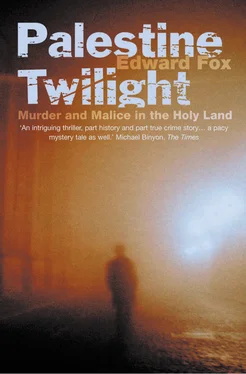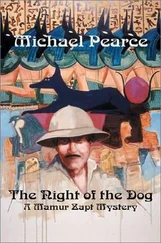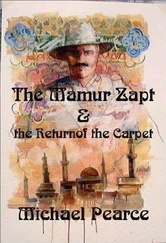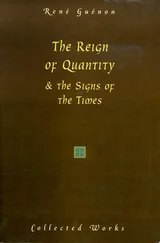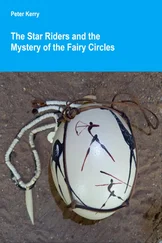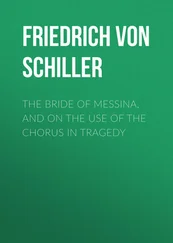As we pursued our course along the wall to the north, and were opposite the end of the Birket Israil, we came upon a slit about eighteen inches wide and four inches high, formed by cutting away the upper and lower portions of two courses. Here was an exciting discovery: what might not be in this chamber in the wall? the ark and utensils secreted at the destruction of the Temple might here be hidden away.
The Pyramids of Egypt hold a similar place in the popular imagination, with their systems of tunnels and supernatural secrets, but the Temple is in our own religious tradition; the Pyramids are merely pagan.
Although Warren was certainly advancing the archaeological knowledge of the structure of the Temple Mount, he was also adding to the corpus of folklore surrounding it, particularly the fascination with secret tunnels. The narrative of his book, Underground Jerusalem , as its title hints, is driven by the mythic power of his search for the secrets of the Temple Mount through tunnels. His exploration of underground Jerusalem is a search for esoteric knowledge, a gnostic adventure, and one that fully assorts with Masonic tradition.
Among one’s own people, a tunnel is a marvel. Held by an enemy, a tunnel inspires fear and suspicion: it is a sinister thing, and evidence of a conspiracy. In September 1996, about seventy Palestinians were killed by Israeli soldiers in a riot that broke out in the Old City of Jerusalem after the Israeli authorities opened an exit to a connected series of chambers and passages of various ages that followed the length of the Western Wall. (It was the same area explored by Charles Warren.) The exit, cut out of a wall, opened out onto the street beside the Temple Mount. It enables tourists to walk the length of the passage without having to double back to the entrance in the Western Wall plaza. The Palestinians of the Old City and throughout the Occupied Territories, and the Muslim clerics of the mosque complex atop the Temple Mount, were outraged because they believed the Israelis were ‘digging a tunnel’ under the Temple Mount and the shrine of the Dome of the Rock which surmounts it.
There is a charming legend in the Islamic tradition of the holiness of the Holy Land, about a magical secret passage. According to a hadith , a saying of the Prophet Muhammad, the prophet declared that there would be a man, a Muslim, who would enter Paradise on foot while still alive and return to tell the tale. This prophecy came true after the Prophet’s death in the following way. During the caliphate of Omar, who captured Jerusalem and introduced Islam into the Holy Land in the seventh century of the common era, a man named Shuraik ibn Hubashah came to Jerusalem with his tribe, the Banu Tamim. He went to the Temple Mount to fetch water from a well there. He lowered his bucket into the well, and the bucket fell in. So he climbed down into the well to retrieve it. At the bottom of the well he found a door. He opened it, and found himself in the garden of Paradise, exactly as described in the Qur’an. He walked around, amazed at what he saw. The thought occurred to him that no one would believe him if he could not prove he had been there, so he plucked a leaf from a tree, put it behind his ear, and climbed up out of the well, with the bucket. The man showed the leaf to the Governor of Jerusalem, who despatched a letter to Omar, the Commander of the Faithful, in Mecca, seeking advice on the marvel. Omar wrote back with the judgement that if the leaf really did come from Paradise it would not wither or dry up.
The leaf stayed green. It was like the leaf of a peach tree, the size of the palm of a hand, and pointed at the top. Shuraik placed the leaf between the pages of his Qur’an, and when he died the Qur’an, with the leaf in it, was buried with him.
The legend refers to a cistern under the Aqsa Mosque that now bears the name Bir al-Waraqah, the Well of the Leaf. Other Islamic legends refer to miraculous channels of water running under the Temple Mount. According to one legend, the waters of the well Zamzam inside the sacred enclosure at Mecca flow into the spring of Siloam, in Jerusalem on the night of ‘Arafat, an Islamic holiday commemorating God’s transmission of the text of the Qur’an to the Prophet. A further legend tells that the four rivers of Paradise – Sihon, Gihon, the Euphrates and the Nile – originate from the base of the Rock on the Temple Mount. ‘The Prophet said, “All the rivers and clouds and the winds come from under the Rock of Jerusalem … The sweet waters and rain-bearing winds issue from the base of the Rock of Jerusalem.’”
These legends elaborate the fact that the Temple Mount contains a system for supplying water to the Temple for ritual purposes. They claim the tunnels for Islam in the same way that Warren’s tradition gnosticized them. They are separate, dreamlike traditions about the same thing: a response to the marvellous quality of this massive structure.
Jerusalem was built by the Canaanites because it had three physical advantages: it was on a hill, which made it easy to defend; it was close to an established road to the Mediterranean coast; and it had a secure water supply, the Gihon spring, which supplied the original Bronze Age city. (The site of this original city lies outside the familiar Ottoman walls of the Old City of Jerusalem.) The water supply allowed the city’s survival. When the first Temple was built, water was channelled to it from Gihon for the purpose of ritual cleansing. The marvel of water had been turned into something sacred. Once captured by the Israelites, Jerusalem became their political and religious capital. Political and sacred power came to rest in the same place. The whole vast corpus of the contending traditions of the holiness of the Holy Land grows from this.
The original attraction of a securely defended city with a safe water supply developed over the millennia into a tradition that generates traditions, which then become layered over others, occluding their original mythic impetus, clashing with each other, producing a spiritual swarm, swirling chaotically over the ancient city. And so now, for this reason, the Ethiopians – to cite just one example – are among those who believe that the sacredness of Jerusalem is theirs. They have their own way of expressing their claim: they believe that the spiritual leadership of Israel under Solomon has passed to them. In the ancient Ethiopian text the Kebra Negast , Makeda, the Queen of Sheba, travels to Jerusalem to hear the famed wisdom of Solomon from the king’s own lips. After entertaining her sumptuously, Solomon consummates his desire to have a son by her. That night, Solomon had a dream in which the sun, which by divine command had shone over Israel, ‘suddenly withdrew itself, and it flew away to the country of Ethiopia, and it shone there with exceeding great brightness for ever, for it willed to dwell there’. Later tradition holds that it is in Ethiopia that the Ark of the Covenant, the seat of God, came to rest; such is the power of the sacredness of Jerusalem, and the holiness of the Holy Land.
In the same fashion, the Islamic tradition builds on this original strategic attraction of Jerusalem, creating a new idea of holiness. The Dome of the Rock, the city’s most recognizable landmark, an ornate octagonal shrine topped with a golden dome that dominates the skyline of the Old City, symbolizes the Islamic claim that the Qur’an and the religion it enjoins both absorbs and supersedes its two monotheistic predecessors, Judaism and Christianity. The Dome of the Rock is the Temple of Solomon rebuilt. For a few years during the prophetic career of Muhammad, the earliest Muslims prayed towards Jerusalem, and the Rock over which the Dome of the Rock is built – an exposed natural outcrop upon which Abraham bound his son Isaac, and from which Muhammad is held to have risen to heaven – was circumambulated in the way that the Ka’ba, the central shrine at Mecca, is now. The Islamic holiness of the Holy Land (which has been taken up and developed in recent years by the Palestinian Islamist movement as part of its political ideology, arguing that the whole of Palestine is an Islamic trust, occupation of which by modern Israel is a violation of religious law) is expressed in a traditional Arabic literature in praise of Jerusalem.
Читать дальше
